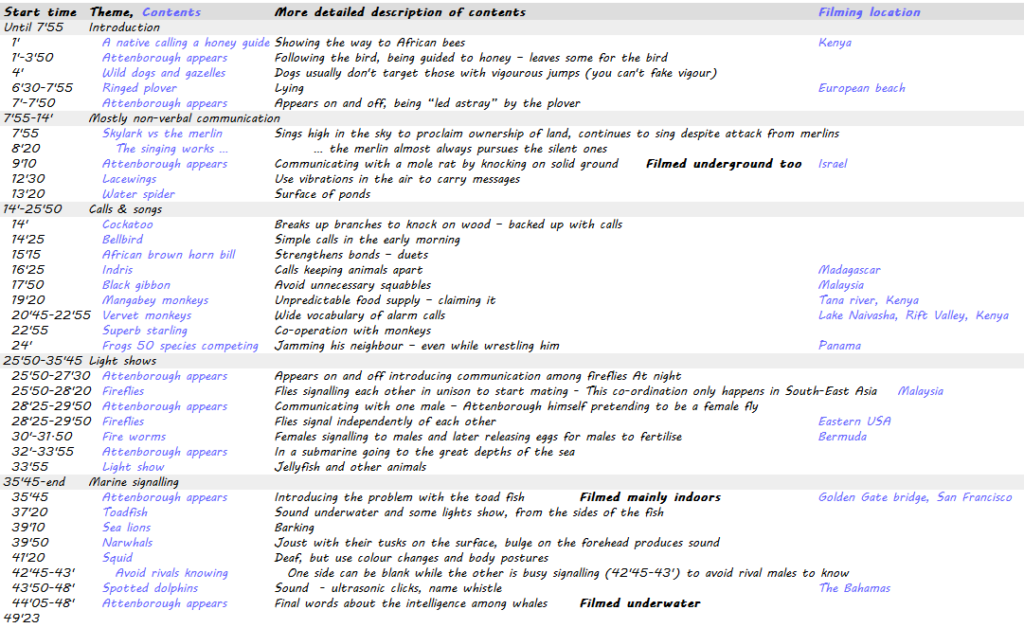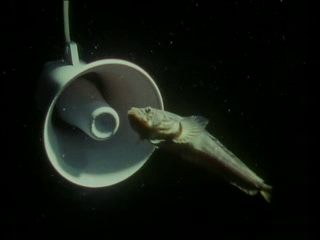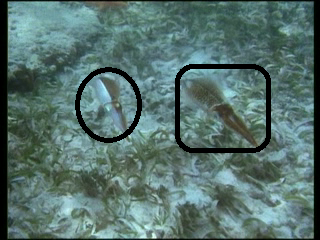Original air date: 5 December 1990


Selected material
The toadfish

A female toadfish attracted to recordings of a song from a male toadfish. The sounds are produced by vibrating the swim bladder. Can be heard above water almost as clearly as in water. Very annoying to people neighbours.

The male can, not only produce sound, he can also use light signals to contact the opposite sex
Squid: one side blank while the other is busy signalling (42’47)

Squid are deaf, so they use colour changes instead. In the above example the male on the left (circled) has a blank left side (neutral to a possible rival) while being busy signalling with his right side to a female (boxed). Body postures are meaningful too, like adverbs in English.
Dolphins, talking and name whistling

Dolphins have a highly elaborate way of communication: They use sounds and visual signals to extend them as well as touching. Rubbing fins when they are close to one another is like us shaking hands. They have names whistles that seem derived from their mother like surnames for humans.
Digging deeper
Similar research has since then indicated similar name-calling among marmosets and elephants.
Final words (after enjoying time swimming with dolphins in an aquarium and witnessing them communicating with each other): “… So these animals can communicate in four different ways – with sounds which we can hear, with ultrasounds which we can’t, with body postures which change the meaning of any one sound, and with touch. The result is an amazingly complex web of communication, unexcelled by any other animal except ourselves. But how marvellous it would be if we could become a part of that.”